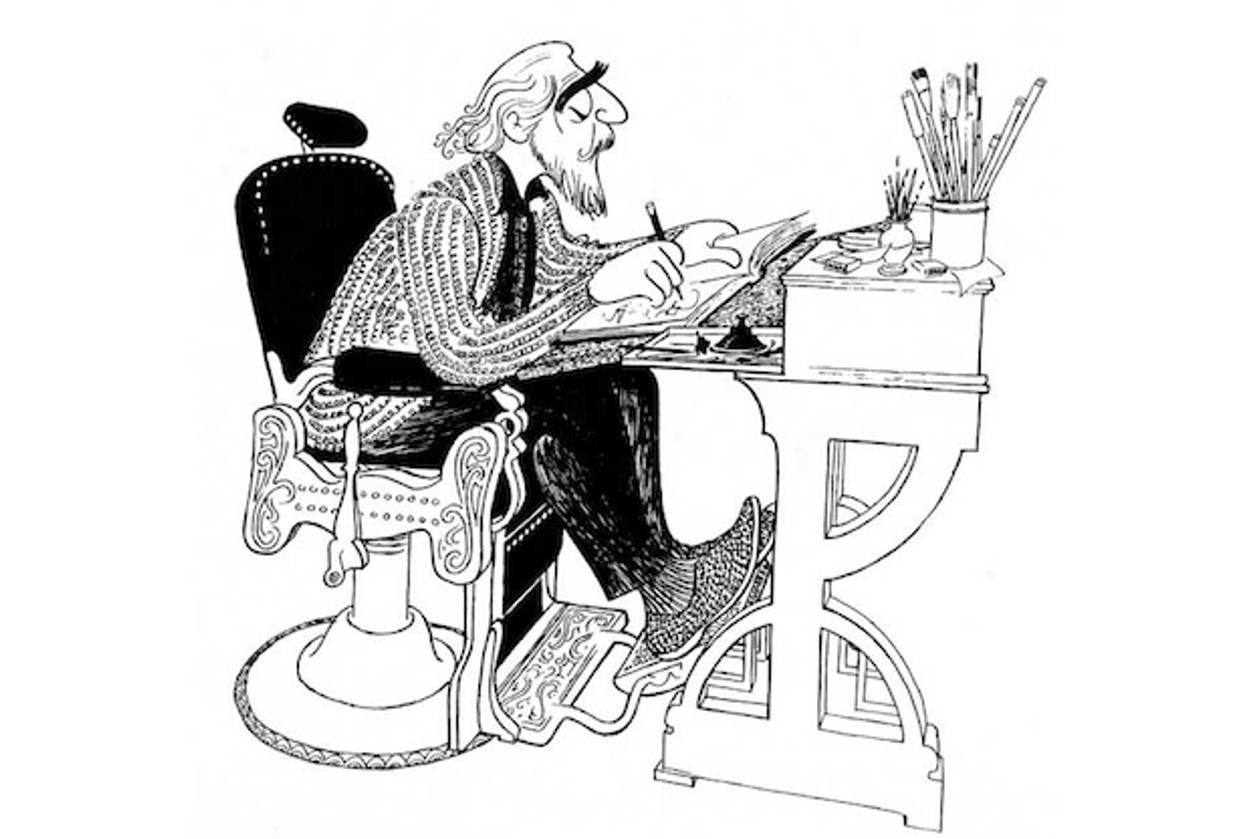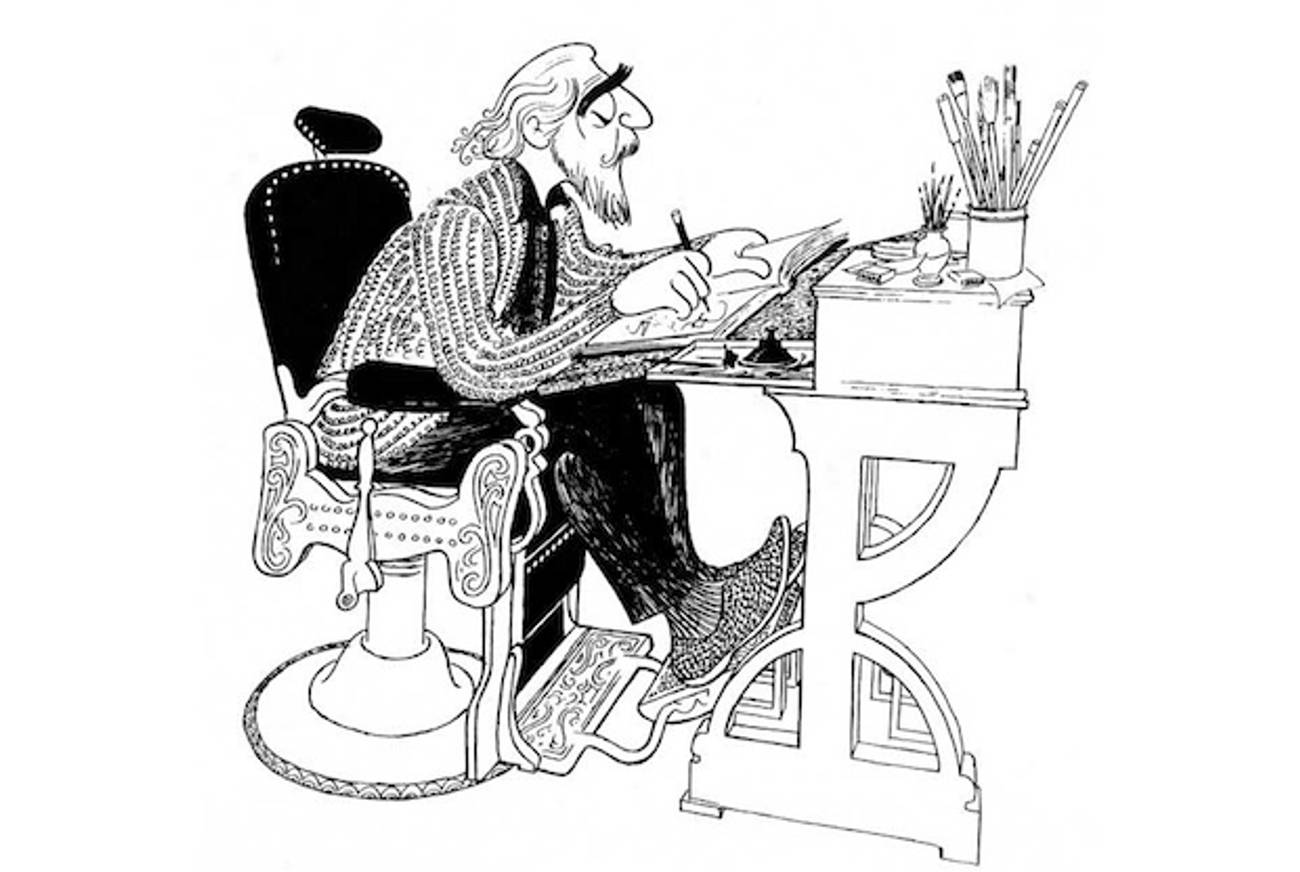Al Hirschfeld, George Gershwin, Rhapsody in Blue
The perfect combination comes together




On the occasion of what would have been Al Hirschfeld’s 110th birthday and since we all like New York in June as well as a Gershwin tune, I thought it would be nice to pay brief tribute to Hirschfeld, whose cartoons, paintings, caricatures, and various other etchings have covered more corners of the cultural and political landscape than is possible to consider.
Born in St. Louis in 1903, Hirschfeld–dubbed “The Line King”–died just shy of his 100th birthday. By that point, but the mark of his crow’s quill had been drawn across some of the most recognizable images of the 20th century. From the original 1939 Wizard of Oz movie poster to spots for Laurel and Hardy, Charlie Chaplin, Marx Brothers, and Buster Keaton flicks, Hirschfeld’s style influenced countless artists and could be seen with regularity across an eight-decade span.
“Work to me is something you don’t want to do, but you have to do it to live. But what I do, I would do whether anybody wanted it or didn’t want it.”
Want it they did. On album covers, in glossies, newspapers, and the personal collections of seemingly ever major entertainer of the century. Jazz musicians, rock stars, writers, television heroes, politicians, and movie stars all sought to have their likenesses captured by Hirschfeld. A chronicler of New York, his work sits in permanent collections of both the Met and the MoMA, an Edward Hopper without all the shade and shadow. A chronicler of Old Broadway, a theater on West 45th Street now bears his name. His desk in the New York Public Library.
One example of his reach is easily seen in Disney, in Aladdin‘s genie and in Fantasia 2000, on which Hirschfeld served as a consultant with his drawings were used for the basis of the famous segment involving George Gershwin’s “Rhapsody in Blue” that captures depression-era New York.
Below is an old, partial cut of the segment. It starts with a line and from it, the metropolis blossoms with buildings rising in stacks, rushing subways, storefronts with Jewish stars and Hebrew letters, and Gershwin above it all, playing piano in a window.
Adam Chandler was previously a staff writer at Tablet. His work has appeared in the New York Times, the Wall Street Journal, the Atlantic, Slate, Esquire, New York, and elsewhere. He tweets @allmychandler.